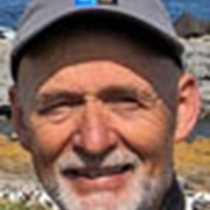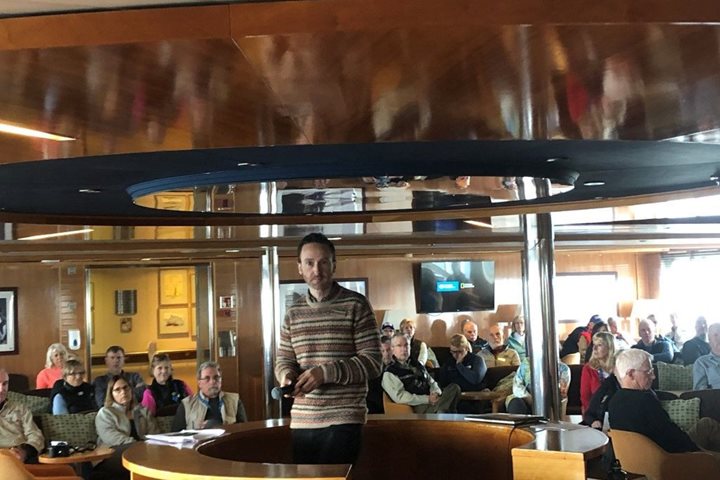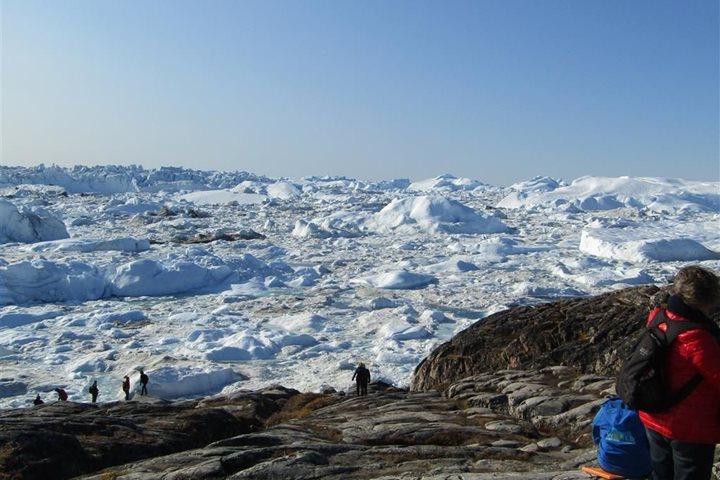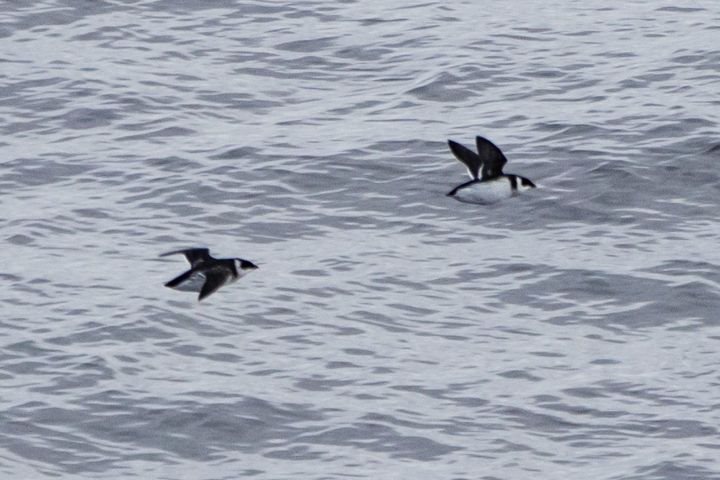The early risers found themselves in a seascape softened by light fog. We were heading for the ice edge off the east coast of Baffin Island. As we moved into waters with denser ice, the fog lifted. The bridge on National Geographic Explorer is a perfect platform for wildlife viewing and many guests found their way to this viewpoint. Telescopes and binoculars were eagerly employed in search of any bird or mammal that might show up. Following yesterday´s great success on polar bears, we were triggered to find more marine mammals. Maybe a walrus, maybe another bear, or even a narwhal? We looked and looked, but only a few seal heads popped up now and then. On one occasion a single harp seal was spotted on a distant icefloe. Although none of the big marine mammals were spotted, the icy waters had plenty of one little bird in store for us: dovekies! As we cruised on after lunch, countless congregations of these charming creatures were spotted, some on icefloes, some flying and some swimming around in search of food. This smallest of the auks—only 7-8 inches long—is also the most numerous bird species in the whole Arctic region. We noticed how small flocks were surface-diving for food between the icefloes. The dovekies mainly feed on planktonic crustaceans. A number of other bird species were also spotted during the day: northern fulmar, thickbilled murre, black-legged kittiwake, pomarine jaeger, ivory gull, glaucous gull, great black-backed gull, and arctic tern.
Here and there large icebergs were breaking the scenery of water and flat ice. One big iceberg had a beautifully shaped arch. Captain Oliver piloted the ship around this rare formation to let everyone get a perfect view.
Two talks were given during the afternoon. Undersea specialist Paul North gave an exciting lecture on the character and role of plankton in the Arctic waters and National Geographic photographer Ralph Lee Hopkins offered useful tips and tricks on how to improve expedition photography.
The recap of the day increased our insights on auks, polar bears, and underwater wonders. After dinner, cultural specialist Hunter Snyder showed his feature length film about hydropower production and fishing and hunting livelihoods in Greenland.







